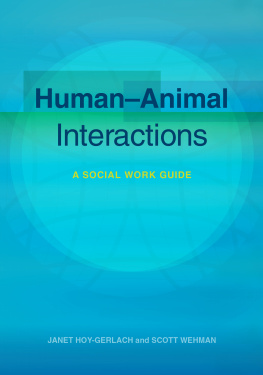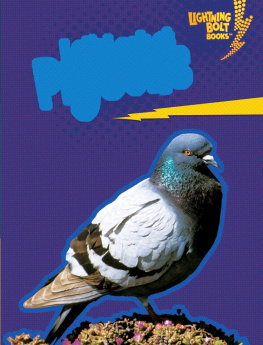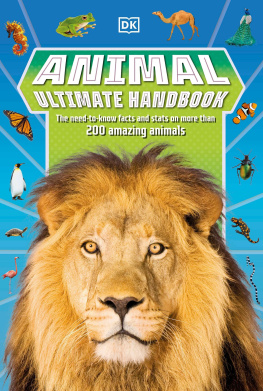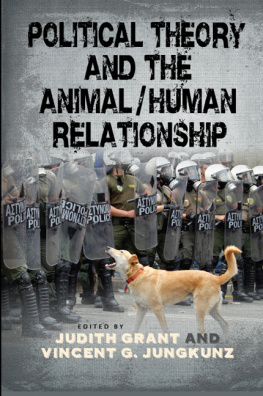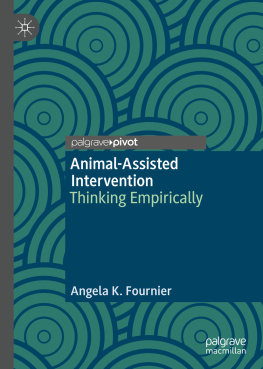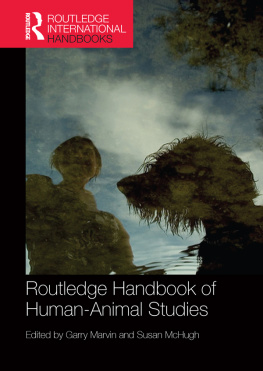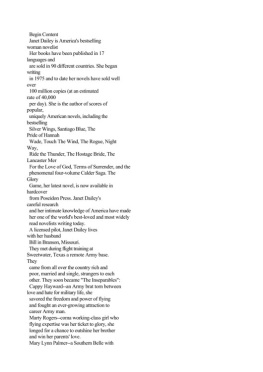Hoy-Gerlach Janet - Human-Animal Interactions ebook
Here you can read online Hoy-Gerlach Janet - Human-Animal Interactions ebook full text of the book (entire story) in english for free. Download pdf and epub, get meaning, cover and reviews about this ebook. year: 2017, publisher: NASW Press, genre: Politics. Description of the work, (preface) as well as reviews are available. Best literature library LitArk.com created for fans of good reading and offers a wide selection of genres:
Romance novel
Science fiction
Adventure
Detective
Science
History
Home and family
Prose
Art
Politics
Computer
Non-fiction
Religion
Business
Children
Humor
Choose a favorite category and find really read worthwhile books. Enjoy immersion in the world of imagination, feel the emotions of the characters or learn something new for yourself, make an fascinating discovery.
- Book:Human-Animal Interactions ebook
- Author:
- Publisher:NASW Press
- Genre:
- Year:2017
- Rating:5 / 5
- Favourites:Add to favourites
- Your mark:
- 100
- 1
- 2
- 3
- 4
- 5
Human-Animal Interactions ebook: summary, description and annotation
We offer to read an annotation, description, summary or preface (depends on what the author of the book "Human-Animal Interactions ebook" wrote himself). If you haven't found the necessary information about the book — write in the comments, we will try to find it.
Human-Animal Interactions ebook — read online for free the complete book (whole text) full work
Below is the text of the book, divided by pages. System saving the place of the last page read, allows you to conveniently read the book "Human-Animal Interactions ebook" online for free, without having to search again every time where you left off. Put a bookmark, and you can go to the page where you finished reading at any time.
Font size:
Interval:
Bookmark:

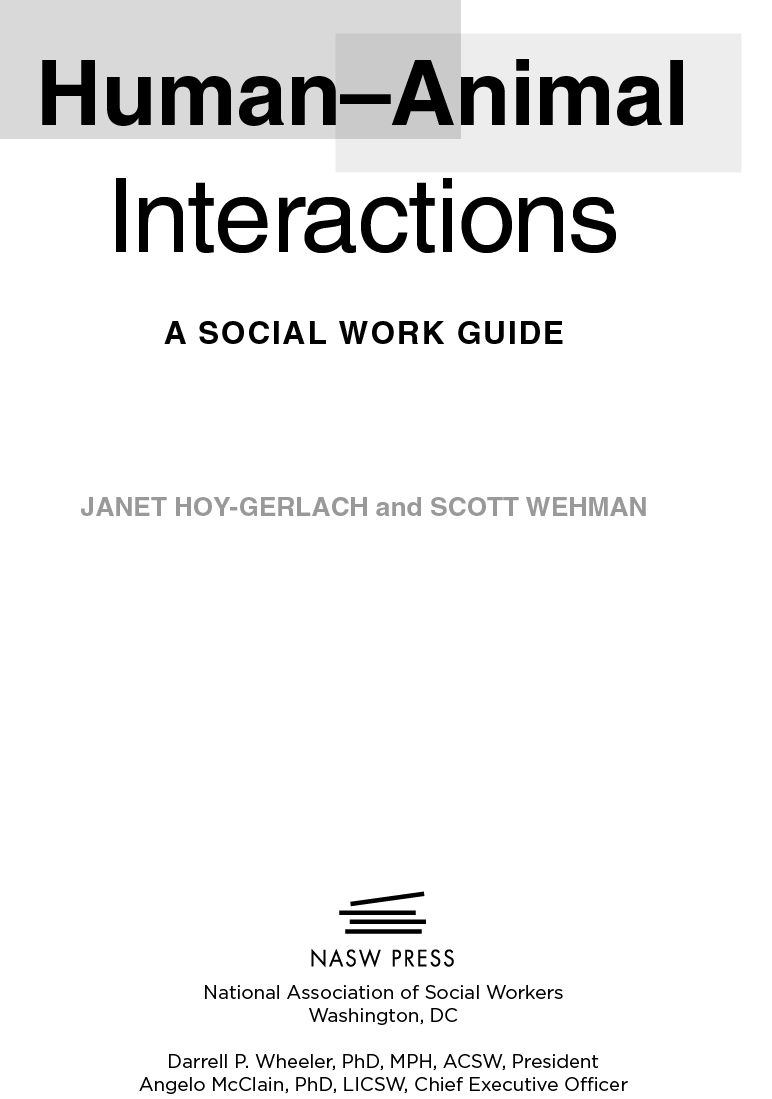
Cheryl Y. Bradley, Publisher
Stella Donovan, Acquisitions Editor
Julie Gutin, Project Manager
Stefanie Lazer, Copyeditor
Julie Kimmel, Proofreader
Lori J. Holtzinger, Zinger Indexing, Indexer
Cover by Diane Guy, Blue Azure Design, LLC
Interior design and composition by Rick Soldin
Printed and bound by Sheridan Books
First impression: April 2017
2017 by the NASW Press
All rights reserved. No part of this book may be reproduced or transmitted in any form or by any means, electronic or mechanical, including photocopying, recording, or by any information storage and retrieval system, without permission in writing from the publisher.
Library of Congress Cataloging-in-Publication Data
Names: Hoy-Gerlach, Janet. | Wehman, Scott.
Title: Humananimal interactions : a social work guide / Janet Hoy-Gerlach and Scott Wehman.
Description: Washington, DC : NASW Press, 2017. | Includes bibliographical references and index.
Identifiers: LCCN 2016059038 (print) | LCCN 2017006480 (eBook) | ISBN 978-0-87101-517-4 (pbk.) | ISBN 978-0-87101-518-1 (eBook)
Subjects: LCSH: Humananimal relationshipsSocial aspects. | Humananimal relationshipsPsychological aspects.
Classification: LCC QL85 .H69 2017 (print) | LCC QL85 (eBook) | DDC 591.5dc23
LC record available at https://lccn.loc.gov/2016059038
Printed in the United States of America
This book is dedicated in
loving memory of Jazzie Hoy
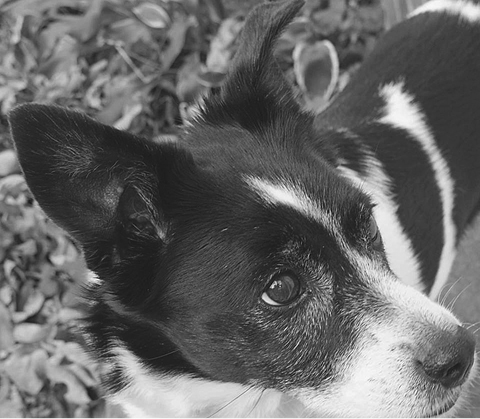
Photo by Aravindhan Natarajan
Contents
About the Authors
Janet Hoy-Gerlach, PhD, LISW-S, is associate professor of social work at the University of Toledo. She has extensive experience as a social work practitioner in the public mental health services system and is an avid advocate for the inclusion of humananimal interaction considerations within social work practice. Janet is on the board of the Toledo Area Humane Society (TAHS), where she developed and supervises MSW internship placements that facilitate benefits of humananimal interaction. She helped to develop the ProMedica Hope and Recovery Pet program, which places TAHS shelter animals as emotional support animals; this is one of the only such programs in the United States. Janet has provided expert witness testimony for the U.S. Department of Justice Civil Rights Department on Emotional Support Animals and has presented nationally and internationally on the therapeutic roles of animals. She lives in Toledo, Ohio, with her wife, Jen, and their son, Zane, three dogs (Henderson, Mabel, and Dawson), and two cats (Mickey Mantle and Dominique).
Scott Wehman, LICSW, has recently obtained independent licensure to practice social work and is a member of a community-based crisis response team providing emergency mental health assessments for residents of Hennepin County, Minnesota.
Acknowledgments
I have wanted to write this book since I was an MSW student in 1998; to actually have written it is a dream come true. There are so many to whom I am grateful.
Many thanks to the following: My wife, Jen, and our son, Zane, for their patience, love, and unwavering support (and Jens last-minute help with final edits!). Our dogs, Henderson, Mabel, and Dawson, and our cats, Mickey and Dominique, for their steadfast love and companionship. My parents, Tom and Joan, for their encouragement. My colleagues; my chair, Lois Ventura; and my former dean Tom Gutteridge at the University of Toledo Social Work Program, for their support of this endeavor. My students, for being inspiring in general and for their interest in humananimal interaction and social work practice. The Toledo Area Humane Society (TAHS), for welcoming the practice of social work into their agency. Gary Willoughby, for his help with historical research and readings of chapters. Susan Conda, for her vision in creating the Hope and Recovery Pet (HARP) program. Megan Brown, for being such a great partner in implementing the HARP program and MSW internships at TAHS. The Mayors Alliance for NYCs Animals, for their innovative tool kit resource for social workers. Erika Hogan, for all of the brainstorming sessions over the years. Jerry Floersch and Jeffrey Longhofer, for mentoring me and teaching me how to write a book. Elijah Jones and Danielle Tscherne, for their help with editing the final manuscript. Scott Wehman, for being a wonderful person to write with. Our editors, Stella Donovan and Julie Gutin, for their support and patience. NASW Press, for providing us the opportunity to write this book. And Jazzie Hoy, for being my canine inspiration.
Janet Hoy-Gerlach
The Relevance of HumanAnimal Interaction for Social Work Practice
Human bonds with animals can be powerful, even lifesaving. While working as a social worker doing suicide risk assessments, one of this books authors, Janet, would routinely ask each client, What has stopped you from acting on your suicidal plans? The purpose of this question was to evoke from each client the strengths and protective factorsspecific to that personthat had helped to keep that client alive up to that point. Responses included, but were not limited to, having children, faith and spiritual beliefs opposing suicide, fear of death, not wanting to hurt loved ones, and not wanting to leave animals behind . Certainly, not every person Janet spoke with who was suicidal referenced having an animal who needed him or her as a reason for still being alive, but this answer was provided frequently enough that it was apparent that having an animal could be a powerful strength and protective factor against suicide for at least some at-risk individuals. Concerns about not wanting to leave an animal behind also posed some challenges in accessing inpatient mental health care for individuals who lived alone and did not have the means to provide care for the animal if they were hospitalized.
This profound connection to animals is not unique. A Google search or journal literature review will quickly yield descriptions of individuals in domestic violence situations who delay leaving for fear of their animals being harmed, individuals in disaster situations who did not want to evacuate because they were told that they had to leave their animals behind, and individuals declining to use housing shelters because they could not bring their animals. Fitzgerald (2007) interviewed a sample of survivors of domestic violence and found several participants who cited their companion animals as a major motivation to live when they were feeling suicidal. Conversely, the academic literature and Internet are replete with studies, news articles, and anecdotes of the many benefits of both formal and informal connections with animals. After the horrific mass shootings of children at Sandy Hook Elementary School in Newtown, Connecticut, therapy dogs offered a source of comfort to mourners (Cunningham & Edelman, 2012, para. 2). On the basis of feedback from the Newtown community emphatically endorsing the value and necessity of the comfort derived from these dogs, Connecticut became the first state to codify animal-assisted therapy programming for trauma survivors into state law:
Therapy dogs were an integral part of helping surviving children heal emotionally, according to Steven Hernandez, an attorney for the state legislatures Commission on Children.
Font size:
Interval:
Bookmark:
Similar books «Human-Animal Interactions ebook»
Look at similar books to Human-Animal Interactions ebook. We have selected literature similar in name and meaning in the hope of providing readers with more options to find new, interesting, not yet read works.
Discussion, reviews of the book Human-Animal Interactions ebook and just readers' own opinions. Leave your comments, write what you think about the work, its meaning or the main characters. Specify what exactly you liked and what you didn't like, and why you think so.

